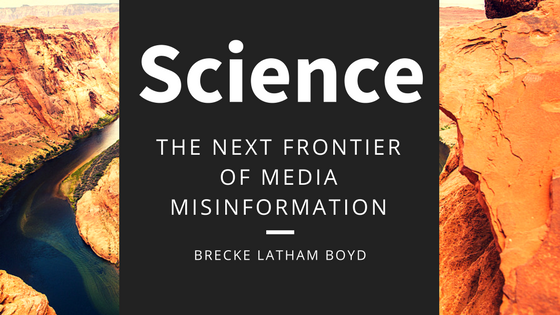You would think that science, with its obsession with facts, proof, and data, would be immune from the epidemic of bad and fallacious information plaguing our society, and yet, it’s become deeply entrenched in the problem. From the heated debates on global warming and abortion to the tooth-and-nail fights for limited science grants, the way scientific findings are publicized and used as fodder in the political arena has left it vulnerable to being consumed by ne’er-do-wells trying to make a profit off clicks. Even besides how science is being misapplied in legislative tete-a-tete, “fake findings” have begun to permeate the field and severely damage the reputations of certain researchers and even entire fields of study.
First, let’s dissect what we mean when we say science. The term science does not necessarily refer to immutable facts carved in stone. Rather, the term has more to do with the process of collecting data and evidence to support or refute a hypothesis. Most scientists will shirk from the word “prove,” as this word implies certainty as to its truth. All science can do is make a judgement call based on a pile of evidence collected either in nature or by stringent studies.
In defense of science, it has gotten much much harder to get a study published, and very few people understand what it means when a scientific discovery happens. FiveThirtyEight published a huge expose in the summer of 2015 when public faith in the scientific method was waning. Around that time, stories were breaking left and right regarding the “reproducibility” of certain studies. Put most simply, for a scientific finding to “count,” other scientists should be able to perform the same methods and get the same results. However, when a sample of studies’ methodologies were performed, the results were nowhere near those which were published. The public was astonished and came down hard on the selectivity of peer-reviewed journals.
To be fair, though, science has become more difficult in modern times. FiveThirtyEight demonstrated just how high the bar for getting published is and how a tiny bit of number fudging can make or break a study. However, the writers and commentators noted, that doesn’t excuse science from the scrutiny of the public and its need to uphold its integrity. From increased sample sizes to more honest reporting, science needs to recalibrate.
Consider, now, how this issue of number fudging and choosy data translates to, say, the debate on climate change and what to do about it. It’s all but impossible to “prove” whether the climate is changing enough to raise concern, and on top of that, the cause of the change. However, different debaters cite different “evidence” that “proves” their side of the story. Both green party affiliates and climate change deniers have pages and pages of evidence bolstering their arguments. However, a glance over the research will indicate funding from political parties that want to see certain findings as well as numbers difficult to reproduce. The glance will also yield that neither side cites evidence that the other presents.
As I’ve discussed in other posts, a lie by omission is still a lie — and fake news by omitted evidence is still fake news. Such “reporting” may not be totally factually false, but when journalists choose to omit a source, base their facts on the opinions of their funders, or lazily research a story, the published news deceives the reader. When scientists or politicians citing science on either side of the aisle pick and choose the science that supports their proposed legislation without understanding the full implications of the study or presenting the whole story, science is leveraged as fake news. For the public to retain its trust in the scientific method and the outcomes thereof, we have to be more mindful about which studies get published and how we cite them in our public discourse.
